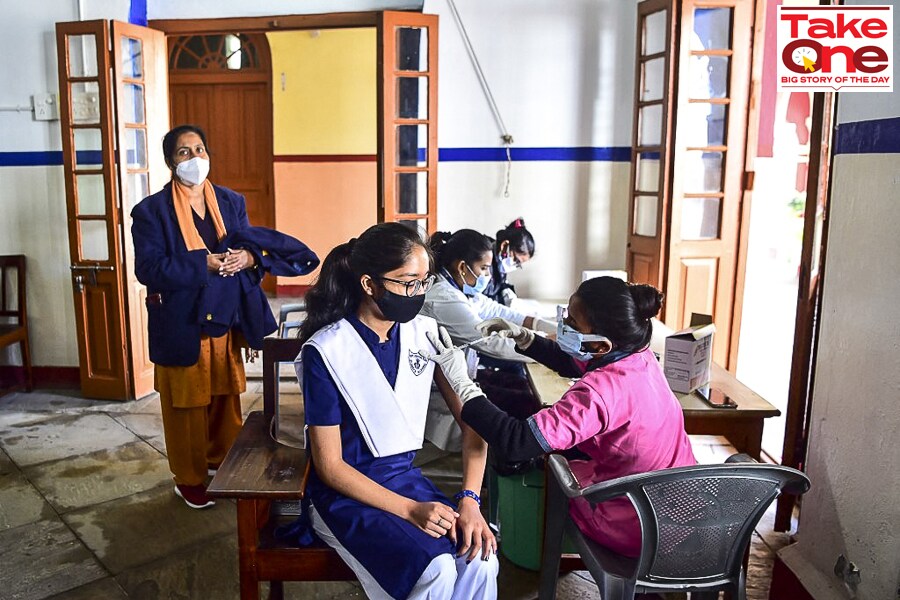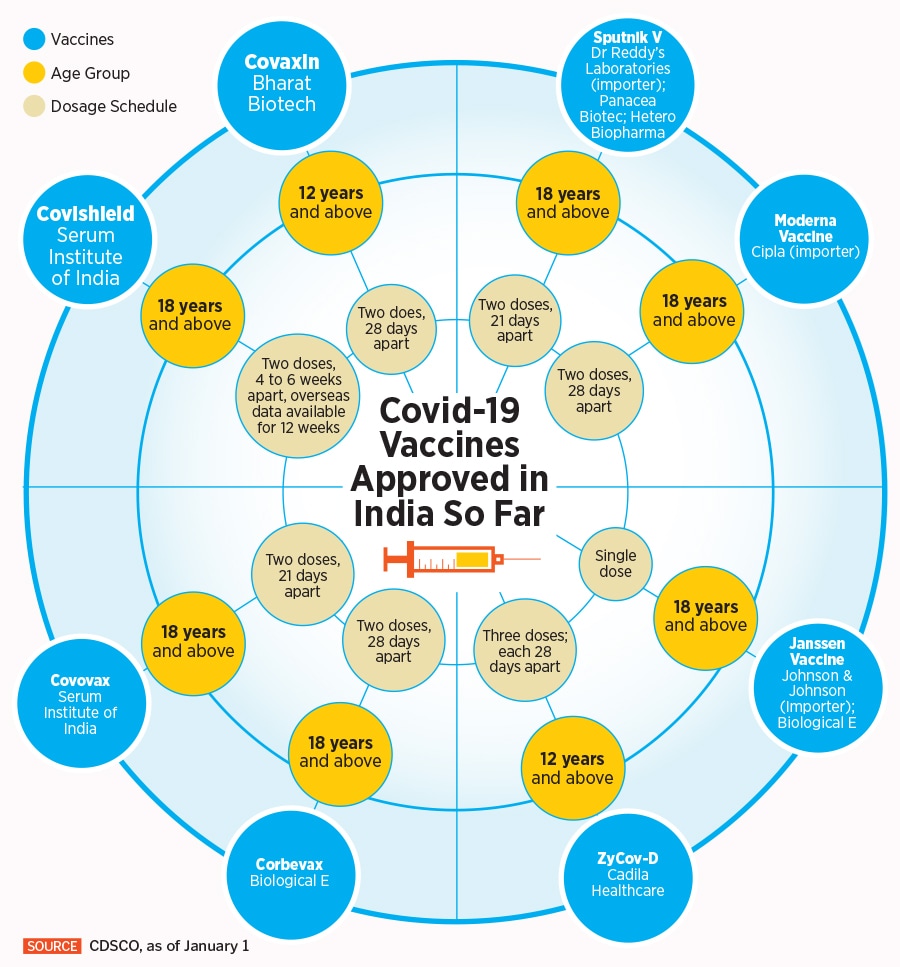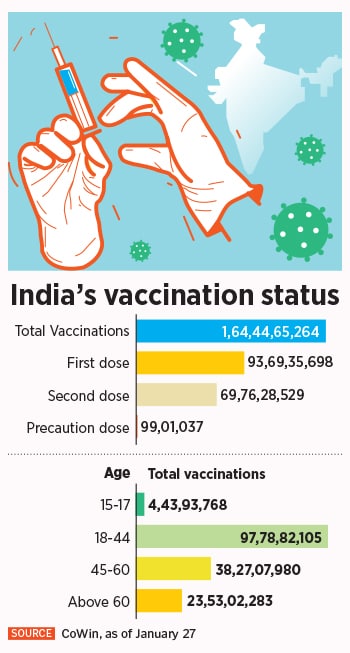
How can India prepare for all the waves and variants ahead?
The focus firmly needs to be on Covid-19 vaccinations, precautionary doses, testing, genome sequencing, and following Covid-appropriate behaviour
 A health worker inoculates a student with a dose of the Covid-19 vaccine at a school in Allahabad on January 12, 2022.
A health worker inoculates a student with a dose of the Covid-19 vaccine at a school in Allahabad on January 12, 2022.
Image: Sanjay Kanojia / AFP
It’s been a frantic few months in the country.
Covid-19 caseloads have been on an upswing since early January, with lakhs of people being affected in the third wave. As of January 26, the seven-day moving average of cases stood at 307,532 cases.
“We are urging the government to allow everyone above the age of 18 to take boosters,” Adar Poonawalla, the chief executive of the Serum Institute of India tells Forbes India. “We have recommended that everyone over the age of 18 should be given a dose with a six-month gap.” The government has been handing out the precautionary dose or the third dose with a nine-month gap. Since the initiative was launched on January 10, India has given over 99 lakh precautionary doses to health care workers and people above the age of 60 with co-morbidities.
Yet, the low severity of the cases in recent times, especially with 75 percent of India’s population having received two doses of vaccines, has only meant that the fear is fast receding. “On May 7, 2021, at the peak of the second wave of Covid-19 when there were 4,14,188 new cases and 3,679 deaths, only 3 percent people were fully vaccinated. On January 21, 2022, there were 3,47,254 new cases and 435 deaths while fully vaccinated people are 75 percent now,” Lav Agarwal, joint secretary in the health ministry, said in a press conference.






 India had set an ambitious target of administering 188 crore
India had set an ambitious target of administering 188 crore 




